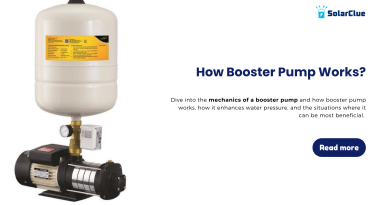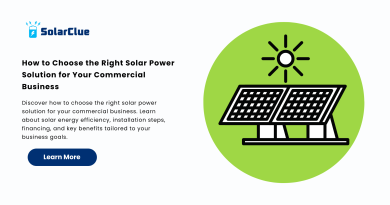What is a Solar Grid-Tie System?
Solar energy is becoming an increasingly popular and viable option for many homeowners and businesses looking to reduce their carbon footprint and save on energy costs. One of the most efficient ways to harness solar power is through a grid-tie system. In this blog, we will discuss what a solar grid-tie system is, how it works, and the benefits it offers. By the end of this article, you will have a clear understanding of how this innovative system can revolutionize the way we generate and utilize electricity.
Table of Contents
What is a Solar Grid-Tie System?
A solar grid-tie system, also known as a grid-connected or grid-tied system, is a photovoltaic (PV) system that allows solar panels to generate electricity and feed it directly into the grid. Unlike standalone solar power systems, which require batteries to store excess energy, a grid-tie system relies on the existing electrical grid as a storage mechanism.
How Does a Grid-Tie System Work?
The main components of a grid-tie system include solar panels, an inverter, and a bi-directional meter. Solar panels, typically mounted on rooftops or in open areas with access to sunlight, generate direct current (DC) electricity when exposed to sunlight. This DC electricity is then converted into alternating current (AC) by the inverter, which is the type of electricity used in homes and businesses.
Once the electricity is in AC form, it can be used to power appliances and devices within the premises. Any excess electricity that is not immediately consumed is automatically fed back into the grid through the bi-directional meter. This meter measures the amount of electricity consumed from the grid and the excess electricity being fed back, allowing homeowners or businesses to keep track of their energy usage and potential savings.
The Benefits of a Solar Grid-Tie System
1. Reduced Electricity Bills: By generating your own electricity, you can significantly reduce or even eliminate your monthly electricity bills. With a grid-tie system, any surplus electricity you produce can be credited back to your account, further reducing your overall costs.
2. Environmental Friendliness: Solar energy is clean and renewable, making it an environmentally friendly choice. By installing a grid-tie system, you are reducing your dependence on fossil fuels, lowering your carbon footprint, and contributing to a more sustainable future.
3. Financial Incentives: Many governments and utility companies offer financial incentives to promote the adoption of solar energy. These incentives can include tax credits, rebates, or feed-in tariffs, making the installation of a grid-tie system more affordable and economically attractive.
4. Grid Stability: Grid-tie systems contribute to the stability of the overall electricity grid. During peak sunlight hours, when your solar panels are producing excess electricity, it is fed back into the grid to meet the demand of others. This reduces strain on the grid and enhances its overall reliability.
5. Net Metering: Net metering is a key feature of grid-tie systems. It allows you to earn credits for the excess electricity you generate and contribute to the grid. These credits can be used to offset your electricity consumption during periods when your solar panels are not producing enough energy, such as at night or during cloudy days.
The Limitations of a Solar Grid-Tie System
While grid-tie systems offer numerous benefits, it is also important to consider their limitations. Here are some factors to consider:
1. Dependency on the Grid: Grid-tie systems do not provide a backup power source during electrical outages or blackouts. This is because they are designed to automatically shut down when the grid experiences a power failure. This is done to protect utility workers who might be working on the grid, preventing accidental electrocution.
2. Lack of Energy Autonomy: Since grid-tie systems rely on the grid for power storage, you cannot utilize your solar-generated electricity during grid outages or when the grid is down for maintenance. This is an essential aspect to consider if you live in an area with an unreliable grid.
3. Initial Installation Costs: While a grid-tie system can save you money in the long run, the initial installation costs can be significant. The solar panels, inverters, and other necessary components can require a substantial upfront investment. However, the financial incentives and long-term savings often outweigh the initial expenses.
Conclusion
Unlock the power of the sun with SolarClue® by your side! A solar grid-tie system presents an efficient and cost-effective way to harness solar power, reducing your dependence on the electrical grid. By generating your clean, renewable energy, you not only significantly slash your electricity bills but also actively contribute to a more sustainable future. Despite some limitations, the compelling benefits of a grid-tie system, including reduced costs, environmental friendliness, and grid stability, make it an irresistibly attractive choice for both homeowners and businesses.
With SolarClue® guiding the way through proper planning and installation, a solar grid-tie system becomes a reliable and efficient source of electricity, ensuring a brighter, greener, and more sustainable future for years to come. Act now and join the solar revolution with SolarClue® as your trusted partner in solar solutions!
Frequently Asked Questions
A grid-tie system connects solar panels to the electrical grid, allowing bidirectional energy flow for efficient power generation.
Unlike off-grid systems, grid-tie systems are connected to the grid, enabling users to draw and contribute power back to the grid.
Most grid-tie systems automatically shut down during outages to prevent backfeeding electricity into the grid for safety reasons.
Benefits include potential cost savings, compensation for excess energy, and continuous power supply from the grid.
While not mandatory, adding a battery storage system allows users to store excess energy for use during power outages.
Excess energy generated is often fed back into the grid, leading to credits or compensation through programs like net metering.
Many regions offer incentives, rebates, or tax credits to promote the adoption of grid-tie solar systems.
Yes, grid-tie systems can be installed on various roof types, and factors like orientation and shading should be considered.
Regular cleaning of solar panels and monitoring system performance are essential for optimal maintenance.
Grid-tie systems are most effective in areas with reliable grid connectivity, making them ideal for urban and suburban environments.


